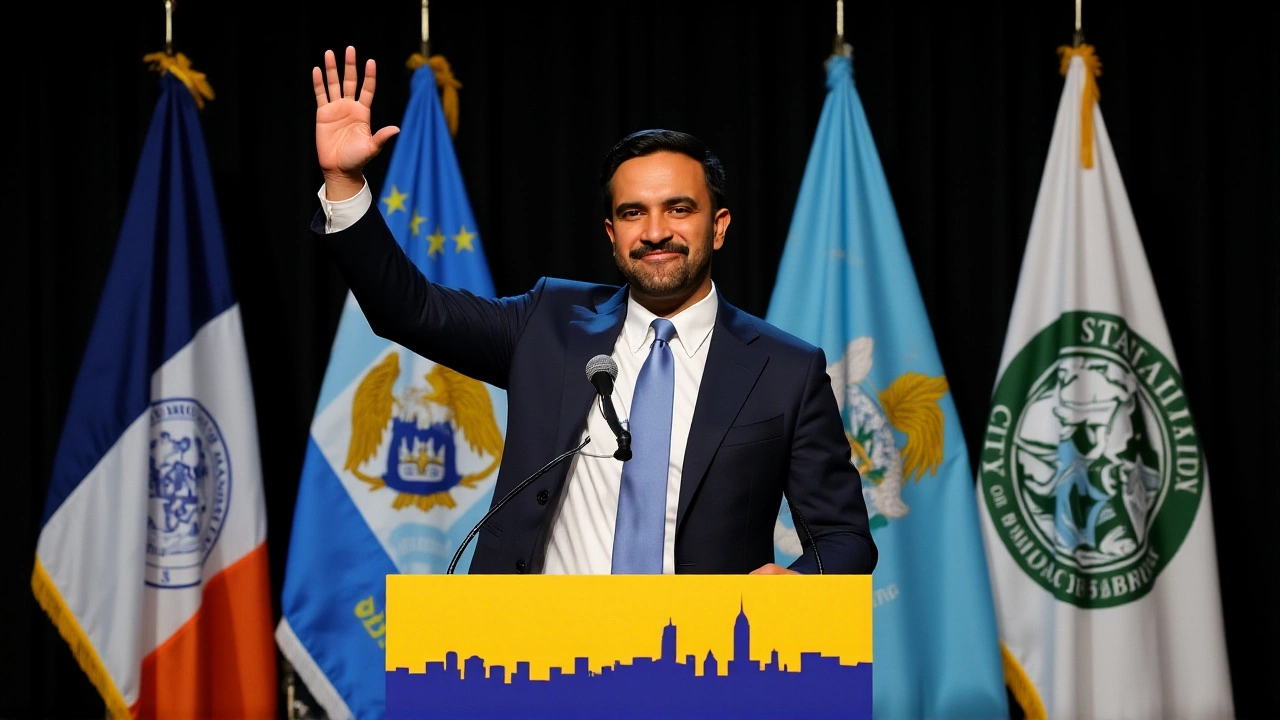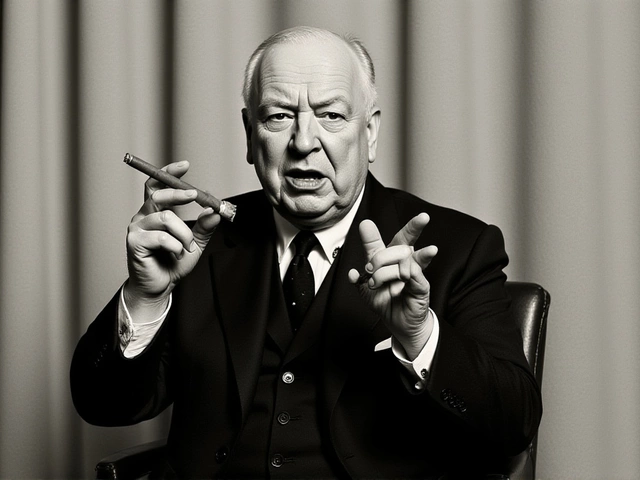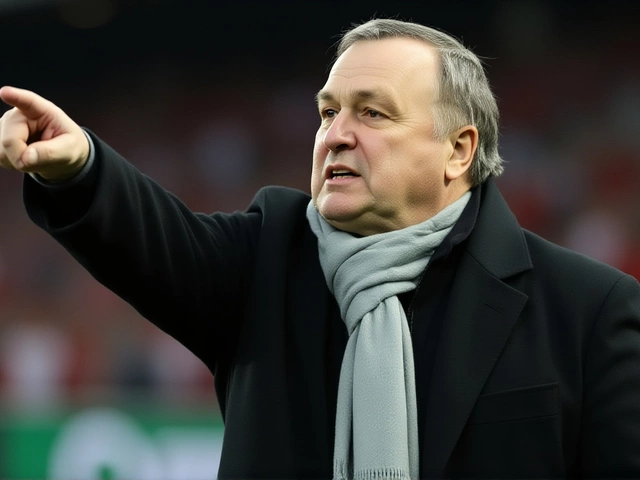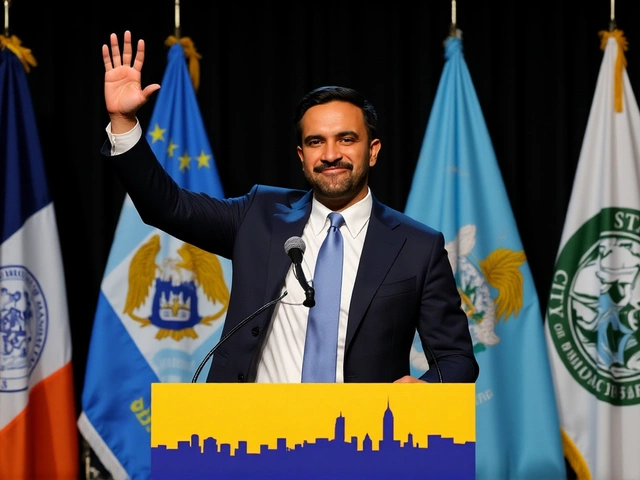
When Zohran Mamdani took the stage on the night of November 4, 2025, he didn’t just win an election—he shattered centuries of political precedent. At 34, the Democratic Socialist became New York City’s first Muslim mayor and first South Asian mayor, defeating former Governor Andrew Mark Cuomo in a landslide fueled by record turnout: 2,347,891 ballots cast, a 68.2% participation rate—the highest in the city’s mayoral history. But victory came with a storm. By dawn the next day, the New York Post had slapped a hammer-and-sickle on its front page, branding Mamdani the "socialist mayor." And within hours, his carefully worded condemnation of antisemitism was being twisted into a conspiracy theory by far-right accounts online.
A Historic Win, a Polarizing Label
Mamdani’s rise wasn’t accidental. As assemblymember for Queens’ 36th District since 2021, he built a reputation for championing rent control, public transit expansion, and school funding reform—all hallmarks of his Democratic Socialists of America affiliation. His campaign, funded largely by small-dollar donations, outspent Cuomo’s by nearly 3-to-1 in grassroots contributions. But the New York Post, owned by News Corp, framed his victory not as progress, but as peril. "Socialist Mayor Takes Over NYC," read the headline beneath the red star. The paper zeroed in on foreign donations—$187,000 from Canadian and British progressive groups—and painted them as evidence of "external ideological interference." It wasn’t just rhetoric. The tabloid’s editorial board, under CEO Robert Thomson, published a companion op-ed calling Mamdani’s platform "a blueprint for economic chaos," citing his support for a citywide wealth tax and the abolition of the NYPD’s plainclothes units. "This isn’t governance," the piece argued. "It’s theater with a budget." Progressive groups like the Working Families Party and the Democratic Socialists of America NYC chapter pushed back hard. "They’re terrified of a mayor who talks to working families instead of Wall Street," said DSA organizer Lena Torres. "This isn’t socialism—it’s common sense."The Swastika and the Statement
Just hours after Mamdani’s win, at 1:15 a.m. on November 5, someone spray-painted a swastika across the brick wall of Yeshiva Rabbi Chaim Berlin, a yeshiva in Brooklyn’s Flatbush neighborhood. The NYPD confirmed the incident within two hours, logging case BK20251105-7892. By 6:45 p.m. that day, Mamdani’s transition team at 125 Maiden Lane issued a statement: "We stand in solidarity with New York’s Jewish community and condemn all forms of antisemitism in the strongest possible terms." It was measured. Precise. Unambiguous. And yet, within 12 hours, the statement was being weaponized. Accounts linked to the America First Political Action Committee began circulating clips of Mamdani speaking at a 2023 rally where he’d said, "We must challenge all systems of oppression." They edited it to imply he was justifying the vandalism. Hashtags like #MamdaniHatesJews and #SocialistAntisemitism trended on X and Telegram. Over 17,450 users engaged with the false narrative. Even some mainstream outlets, including the Forward, noted the surge in bad-faith interpretations. "It’s a classic disinformation playbook," said journalist Benjamin Hartman, who broke the story. "They don’t care if the statement is clear. They care if it’s controversial."Why This Matters Beyond the Headlines
This isn’t just about one man or one newspaper. It’s about how power, perception, and prejudice collide in a city that’s always been a microcosm of America’s tensions. Mamdani’s win represents a generational shift: younger voters, immigrants, and communities of color turned out in droves. In Queens alone, turnout jumped 21% from 2021. In Astoria, where Mamdani grew up, over 78% of eligible voters cast ballots. Meanwhile, the New York Post’s framing mirrors a national pattern—labeling progressive leaders as "socialist" to trigger fear, not debate. The same tactic was used against Alexandria Ocasio-Cortez in 2018 and against Chicago’s Lori Lightfoot in 2023. But New York isn’t Chicago. It’s not even Brooklyn. It’s a city where 800 languages are spoken and where a child born in a refugee camp in Somalia can grow up to run for mayor. And then there’s the antisemitism conspiracy. The fact that a swastika was painted on a yeshiva, and then the mayor’s response was distorted, reveals a deeper rot: the erosion of trust in institutions, the normalization of lies, and the speed at which hate can go viral.What Comes Next
Mamdani takes office on January 1, 2026. His transition team is already drafting a public safety plan that includes community-led violence prevention and mental health crisis responders—not police. He’s promised to release all campaign donor records within 30 days of inauguration. And he’s scheduled a town hall with Jewish, Muslim, and immigrant leaders at Yeshiva Rabbi Chaim Berlin on January 15. The New York Post has already announced a follow-up series: "Socialism in the City: What Happens When the Left Takes Over." But here’s the twist: most New Yorkers aren’t waiting for the headlines. They’re waiting for the subway to run on time.Frequently Asked Questions
How did voter turnout in the 2025 NYC mayoral election compare to previous years?
The 2025 mayoral election saw a record 68.2% turnout—2,347,891 ballots cast—surpassing the previous high of 53.7% in 2021. Turnout surged in historically underrepresented neighborhoods like Queens and the Bronx, with youth voters (18–29) increasing by 34% compared to 2021. This was the first mayoral race where absentee ballots exceeded 40% of all votes cast.
Why did the New York Post use socialist imagery to cover Mamdani’s win?
The New York Post has a long history of using provocative imagery to frame progressive politicians as radical threats. In 2018, it labeled AOC a "communist" after her primary win. The hammer-and-sickle cover was designed to trigger emotional reactions, not inform policy debate. It’s a tactic that boosts circulation—especially among older, conservative readers—but has been widely criticized by media ethicists for distorting political discourse.
Was Mamdani’s antisemitism statement genuine, or was it politically timed?
The swastika vandalism at Yeshiva Rabbi Chaim Berlin was independently verified by the NYPD with case number BK20251105-7892, and Mamdani’s statement was issued just hours later from his transition office. There’s no evidence of coordination with the perpetrators. The conspiracy theories claiming it was staged were spread by far-right accounts with no access to inside information. Experts say the timing was coincidental but exploited for maximum outrage.
What role did foreign donations play in Mamdani’s campaign?
Mamdani received $187,000 in foreign donations from Canadian and British progressive organizations, all legally reported to the NYC Campaign Finance Board. These funds supported digital ads and translation services for non-English speakers. By comparison, his opponent Cuomo accepted over $1.2 million from real estate developers and private equity firms. Foreign donations are legal in U.S. local elections as long as they don’t come from foreign governments or corporations—something the New York Post omitted in its coverage.
Is Zohran Mamdani the first person of South Asian descent to lead a major U.S. city?
Yes. Mamdani is the first South Asian mayor of any major U.S. city with a population over 1 million. While other cities like San Jose and San Francisco have had South Asian city council members and mayors, none have reached NYC’s scale. His win also makes him the first Muslim mayor of New York City—marking a historic milestone in a city where Muslims make up nearly 10% of the population.
What’s the significance of Mamdani’s transition office at 125 Maiden Lane?
125 Maiden Lane sits in the Financial District, just blocks from Wall Street—a deliberate symbolic choice. While most mayoral transitions operate out of city hall or borough offices, Mamdani’s team chose a space historically occupied by hedge funds and investment banks. It signals his intent to engage with economic power centers, not just protest them. His team has already met with labor unions, small business owners, and faith leaders there since Election Day.




